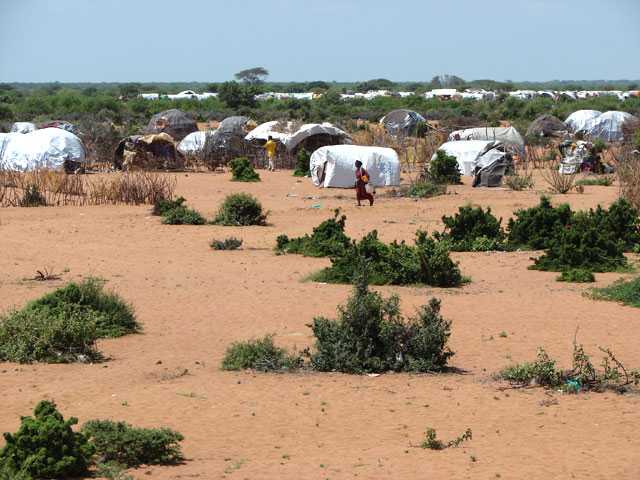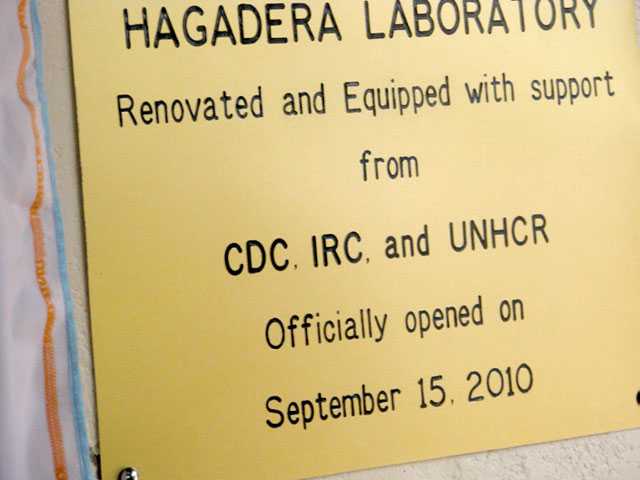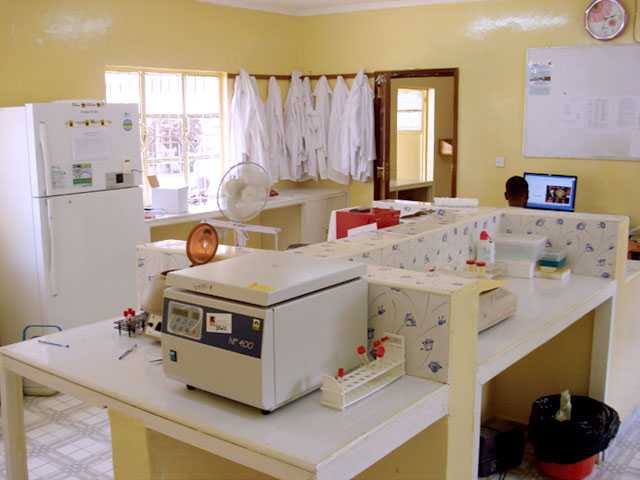Improving Health for Kenya's Refugees by Building Laboratory Capacity

Dadaab Refugee camp in the North Eastern Province of Kenya.
Not far from the Somalia border in Kenya lies the town of Dadaab, home to over 300,000 refugees in what is the largest refugee camp in the world. Refugees travel long distances, often by foot, without adequate food, water, sanitation, or shelter. They are faced with a host of medical problems which are compounded by the overcrowded conditions and limited access to care in the camps where they live. It is easy for infectious diseases to spread quickly in such conditions. In 2010, the U.S. Centers for Disease Control and Prevention (CDC) Division of Global Migration and Quarantine (DGMQ) responded to nine disease outbreaks in the Dadaab Refugee Camp, including cholera, H1N1 flu, measles, meningitis, and pertussis.
Every year, the United States receives about 4,000 refugees from Dadaab and 50,000 refugees globally. CDC’s DGMQ provides guidance and oversees the quality of medical screening for resettling refugees, while the International Organization for Migration (IOM) conducts the medical exam on-site. “We carry out surveillance in the Dadaab camp in addition to providing technical support to IOM for the migration health exam. The program participates in outbreak investigations and provides public health support to our partners as needed,” said Dr. Rachel Eidex, Director for DGMQ’s Africa Regional Field Program.
In 2007, DGMQ, in collaboration with the United Nations High Commissioner for Refugees (UNHCR) and Deutsche Gesellschaft für Technische Zusammenarbeit (GTZ), started respiratory disease surveillance in the Dadaab Refugee Camp. Eidex explained, “There was no way to figure out the leading causes of illness or to detect an outbreak early on, let alone an emerging pathogen. The health system was stretched and we wanted to help address the daily public health challenges.” It wasn’t easy.
Laboratory capacity in Dadaab was extremely limited. Surveillance and diagnostic specimens had to be transported to a lab in Nairobi for testing, and there are only two flights out of Dadaab each week. Results were often not obtained for weeks or even months. Determining the pathogen associated with an outbreak of watery diarrhea or the cause of someone’s pneumonia could take weeks before results were obtained if a viable specimen was received. In most cases, clinicians didn’t bother sending specimens – either the right specimen collection supplies were not available or by the time the result came back the patient would be long gone. The clinician needed to act on the information at hand and the luxury of a diagnosis was not available. The only way to continue conducting disease surveillance and to help clinicians appropriately treat public health issues in Dadaab was to provide the diagnostic capacity on-site.

A plaque hangs outside the lab in Hagadera Camp, part of the Dadaab Refugee Camp Complex.
CDC’s DGMQ and International Emerging Infections Program worked closely with UNHCR, the International Rescue Committee (IRC), and the Kenya Medical Research Institute (KEMRI) to set up a functioning laboratory at a site where access to water, electricity, space, and staff are significant challenges. The goal was to implement respiratory, febrile, and diarrheal disease surveillance – the leading causes of illness and death in the camp – and to put diagnostic tools in the hands of camp clinicians. On September 15, 2010, a new and improved laboratory officially opened at the Hagadera Hospital in Daadab Refugee Camp. This could not have been accomplished without the extraordinary collaboration and commitment across agencies and programs. The lab serves approximately 1,000 people a month from the camp and the surrounding host community, according to Dr. John Burton, the Health Coordinator for the UNHCR. It is the only lab of its kind in the North Eastern Province of Kenya, and can help serve the needs of others in this region and southern Somalia. The IRC runs the lab with CDC and KEMRI staff embedded to assist with specialized testing. “Data are currently shared with clinicians on site, but eventually we hope this information will be shared more broadly with all the partnering agencies to allow them to examine events as they are happening and make informed public health decisions,” said Eidex.

The lab contains state of the art equipment to better diagnose common pathogens.
Recently, the first cases of Shigellosis were identified in Dadaab. Previously, the testing capacity was unavailable and the organism is too fragile for transport; however, the updated lab now has the capacity to identify this diarrheal disease. Today, if a mother walks into the hospital with a febrile child, that child can have numerous tests performed to help determine the cause of the fever. Now, the doctor will know how to treat the patient and the agency will know how to respond in order to protect the community. “There’s no more shooting in the dark when it comes to patient management,” noted Eidex.
It has been a long road and there is still a need for test kits and other support, but with strong partnerships and continued dedication, this project will improve the lives of those seeking refuge in Kenya and beyond.
- Page last reviewed: December 23, 2016
- Page last updated: December 23, 2016
- Content source:


 ShareCompartir
ShareCompartir